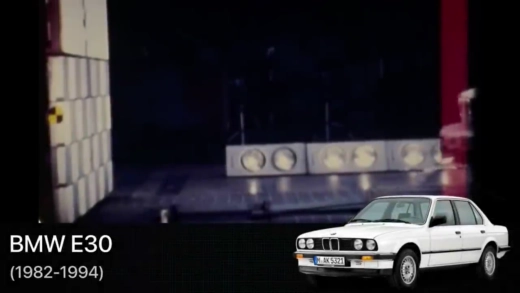It can be hard to see progress as it’s happening but, fortunately, crash testers have been recording their findings, both in print and video, for years now, giving us an opportunity to see exactly how much automotive safety has improved over the years.
YouTube channel The Car Crash has been compiling classic and modern crash test videos from a variety of safety institutions, ranging from the American IIHS (Insurance Institute for Highway Safety) to the Euro NCAP (New Car Assessment Programme) to Germany’s ADAC (Allgemeiner Deutscher Automobil-Club), and beyond to show exactly how much safety features have improved through the years.
Each video takes a single model line and shows footage of crash tests going as far back as the ’70s in some cases, to see how they stack up next to their modern equivalents. When you compare the most recent vehicles to the oldest, it’s almost staggering to think that anyone ever survived a car crash in the last millennium.
Read: The IIHS Has Introduced A Tougher Side-Impact Crash Test And Small SUVs Are Struggling
Take, for instance, the Mercedes-Benz C-Class. In 1993, the W202 model was introduced, featuring such safety equipment as a front seatbelt pre-tensioner, a front airbag, and even a side airbag. Despite that, though, the EURO NCAP found there was much room for improvement, awarding the car just two out of five stars.
Examiners found that the C-Class “suffered excessive intrusion into the footwell area, where stiff structures that came into contact with the driver’s right knee presented serious injury risks to his knee, thigh and pelvis.” And although it had a side airbag, in the side impact test, “the door struck the dummy’s chest before the side airbag had fully inflated.” I’m no expert, but that sounds bad.
Footage of the crash test, meanwhile, paints an equally grim picture. In the front overlap crash test, the roof buckles just over the B-pillar, allowing the A-pillar to rise up, and the passenger compartment to accordion.
By the next generation, though, the results are shockingly different. The 2001 Mercedes-Benz C-Class (W203) looks decidedly more modern in the test than its predecessor. The pillars all remain intact, and, from the video, at least, it appears that the passenger compartment remains unintruded upon.
Indeed, in IIHS testing, the car got the institute’s highest marks almost across the board. Evaluators found that the structure and safety cage were “Good” (its highest rating), and that the car protected the driver’s head, chest, neck, and legs well. Its seats and headrests, though, were considered “Marginal” (the institute’s second-lowest rating) at the time. Today, the C-Class gets a five-star rating from EURO NCAP.
It’s much the same story with the Audi A4. In 1994, the B5-generation sedan crumpled in much the same way as the Mercedes. Despite that, the car earned a higher star rating than its competitor (three out of five) from EURO NCAP, though its third star was flagged “to indicate that the driver faced an unacceptably high risk of chest injury in the side impact.” In the front crash, meanwhile, there was a risk of injury to the knees because of hard surfaces and the crushing of the passenger compartment.
Again, though, just a generation later, the 2001 Audi A4 B6 performed significantly better. Its passenger compartment was deemed “strong” by crash testers, and the airbags worked well to protect the heads of the dummies.
It’s a story that’s repeated frequently through these crash test video compilations, among them BMW’s 3-Series, the VW Golf, the Honda Accord, and others. These tests show that the ’90s were a period of rapid improvements in the field of passive safety technology, with crash test results improving significantly over the course of the decade, thanks, in part, to these independent safety organizations.




